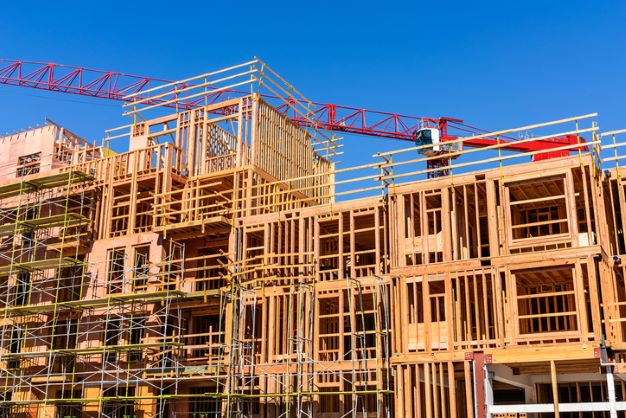This week, the Beverly Hills City Council made a variety of minor changes and clarifications to the city’s Housing Element to comply with state regulations. While many of these changes are clarifications and the addition of details, several new timelines and goals were added to the document.
The Housing Element is a required aspect of a city’s General Plan that outlines a city’s efforts to provide adequate lower-income and middle-class housing. Completing a Housing Element that received approval from the state has been a journey three years in the making, and that road included a lawsuit and many rejected proposals.
“There were many revisions and much back and forth, but it’s exciting that we have a compliant housing element,” Councilmember Lili Bosse said at the meeting.
A report presented at a study session held before Monday’s meeting showed that the city was far behind the Regional Housing Needs Assessment (RHNA) requirements for affordable housing, having just built five of the over 1,000 units that qualify as low-income required over the past three years. Advocacy group Californians for Homeownership sued the city over the inadequate housing element that resulted in this outcome, and a Los Angeles Superior Court Judge ruled in favor of the group last December.
The State Department of Housing and Community Development (HCD) has communicated the need for several changes to be made to the city’s Housing Element to match up with state requirements, and HCD confirmed to the city that the changes proposed at this meeting would bring them in line with state requirements.
Many of the changes were simple revisions that included more specific language, but timelines and “Additional commitments for alternative actions” are also included as part of these changes. Some of these new inclusions introduce entirely new programs to further assist disadvantaged tenants in the city, such as a program to “Provide…in-home assistance and installation of minor features for accessibility” for low-income, disabled, and senior citizens.
Beverly Hills already contracts for services with Jewish Family Services of Los Angeles and will continue to do so, and will target a goal of serving 100 households per year, at least 25 percent of which being low-income housing.
Timeframes have also been established for many of the programs that the city outlined in previous iterations of the Housing Element. One of these is the Handyworker Program — also known as the Residential Rehabilitation Program — which provided minor home repairs, improved security, and mobility assistance to low-income tenants before the COVID-19 pandemic.
A timeline to reestablish the program by 2025 has been added to the Housing Element, with the city expected to explore alternative program options by 2026 should that deadline pass.
Regarding its rent stabilization program, the new Housing Element has established that the city will create a program for annual housing inspections by the Rent Stabilization Office sometime this year and a rental assistance pilot program which will help offset rent increases in 2024.
To help improve the affordable housing stock, another issue the city is looking to tackle is the loss of rental housing units to condominium conversions. Currently, the city requires just 10 percent of units in a 10+ unit project to be deemed affordable. Still, city staff will look into potential changes to the conversion regulation ordinance applicable to condominium conversions and amend the ordinance by the end of 2026.
The city’s accessory dwelling unit (ADU) stock is also subject. A program will be created by the city to monitor ADU production by affordability level to produce at least 20 ADUs per year by the end of 2025. A series of reactionary changes — including potential revisions to ADU regulations in 2026 and the adoption of ordinances at the end of 2026 and 2027 to allow additional ADU’s on certain properties.
Other additional assistance will be provided over the next several years, including providing pre-checked ADU plans to the public by 2025 and other regulatory incentives to further encourage ADU production by 2026.
This revised Housing Element also updated information on three potential development sites with plans for affordable housing projects. These include the project at the Credit Union Site at 9268-9298 W. 3rd Street and the city-owned sites at 8401-8423 Wilshire Blvd and 111 North Gale Drive.
Project entitlements for the Credit Union Site project — which has the city working with non-profit West Hollywood Community Housing Corp. to build an estimated 352-unit senior affordable housing complex — have not been approved. The city will look to reissue a Request for Proposal to get a different project on the site with an estimated total of 352 units moving if these entitlements are not approved by 2026.
The Gale Drive site could be the site of a project that includes 125 affordable housing units, but the city will look towards alternate sites if plans are not approved by the end of 2027. On the other hand, the site at Wilshire Boulevard is still unowned by the city but is expected to be purchased by the city “As soon as it becomes available and no later than the end of 2027” for a project with an estimated 80 affordable units.
While these projects and the initial approval of the Housing Element are encouraging, Beverly Hills may not be out of hot water just yet. Californians for Homeownership counsel Matt Gelfand has said the updated housing element still needs to meet state law requirements.
“The city of Beverly Hills remains out of compliance with state housing element law and the judgment entered against it,” Gelfand told the Beverly Press on March 19. “As HCD’s recent letter to the city makes clear, HCD’s findings regarding the city’s revised draft housing element do not absolve the city of its separate obligation to comply with the court’s judgment.”
He added, “The revised housing element is missing several key requirements identified by the court, including the need to provide evidence to demonstrate that the thriving commercial and institutional uses on the city’s housing element sites are likely to be discontinued by 2029.”
Photo by Sundry Photography on iStockphoto.com
Stay informed. Sign up for The Westside Voice Newsletter
By clicking submit, you agree to share your email address with Westside Voice. We do not sell or share your information with anyone.








